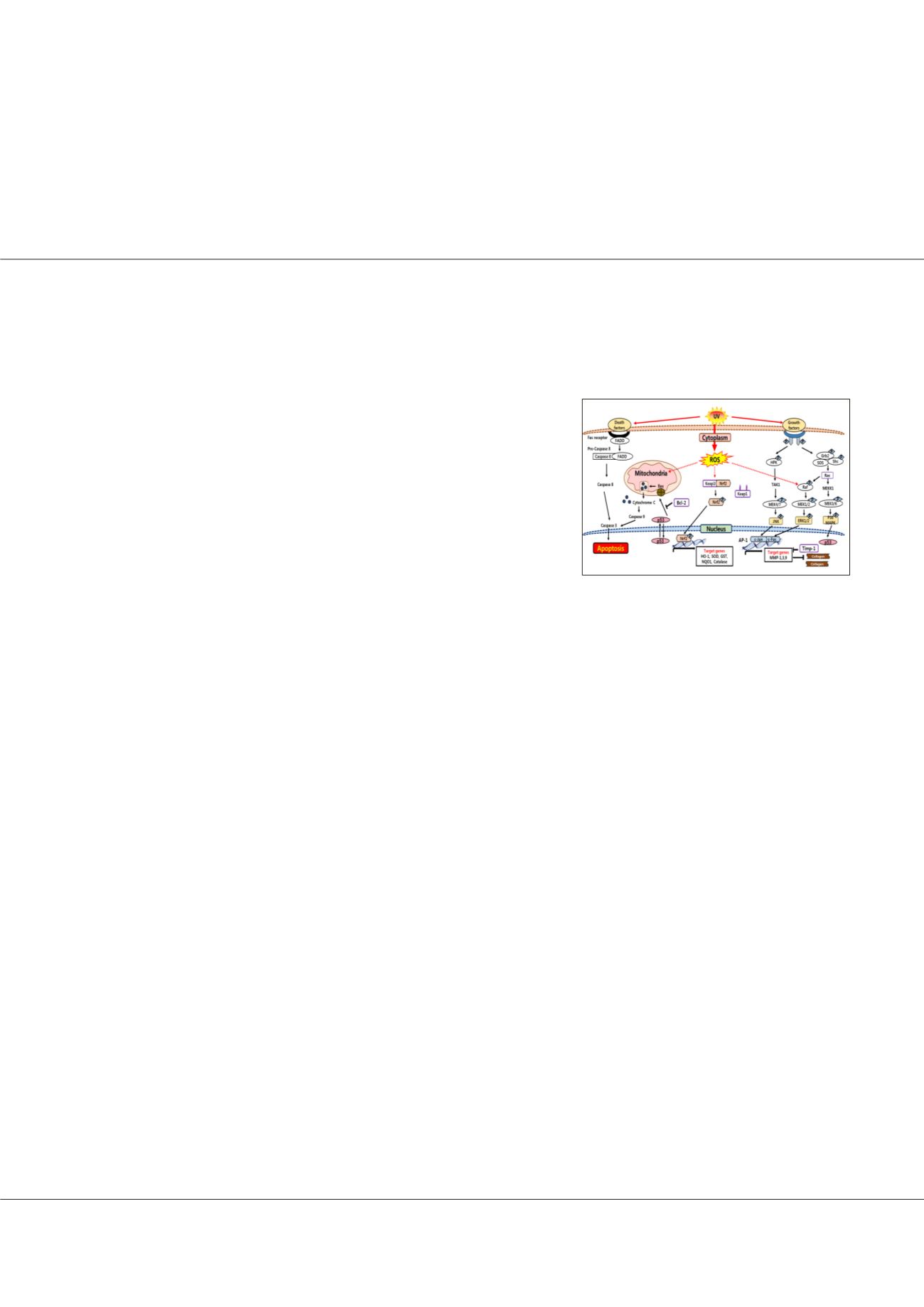

Page 85
Notes:
conferenceseries
.com
Volume 4
Toxicology: Open Access
ISSN: 2476-2067
Toxicology Congress 2018
March 12-14, 2018
March 12-14, 2018 Singapore
14
th
World Congress on
Toxicology and Pharmacology
Anti-photoaging effects of ammonium glycyrrhizate in UVB-irradiated HaCaT keratinocytes and
UVA-irradiated human dermal fibroblasts
Byung-Mu Lee, Seung Eun Lim and Hyo Sun Suh
Sungkyunkwan University, South Korea
A
mong many environmental factors, solar ultraviolet irradiation is considered
the main cause of skin aging in humans. In this study, the protective effect
of ammonium glycyrrhizate (AG), an active component of Licorice root, on
UVA- and UVB-induced photo-toxicity was investigated. The antioxidant
phytochemical AG has been reported to have various pharmacological properties
including cardio-protective, anti-inflammatory and soothing effects on sensitive
skin. Despite the known therapeutic effect of AG, the molecular mechanisms
related to the photo-protection of AG against UV-induced oxidative cell damage
has not yet been determined. In UVB-irradiated HaCaT keratinocytes, AG
inhibited both oxidative stress and the apoptosis signaling pathway. In addition,
AG promoted the activities of the antioxidant enzymes heme oxygenase-1 (HO-1), glutathione peroxidase 1/2 (Gpx1/2) and
superoxide dismutase 2 (SOD2) by translocating nuclear factor (erythroid-derived 2)-like 2 (Nrf2) in the nucleus. In UVA-
irradiated human dermal fibroblasts, AG suppressed the expression of secreted matrix metalloproteinase (MMP)-1 and -9 by
inhibiting the activator protein-1 (AP-1) transcription factor. Furthermore, AG remarkably increased the synthesis of pro-
collagen in human dermal fibroblasts (HDF). These results suggest that AG has protective effects against UVA and UVB-
induced photoaging and should be considered a potential therapeutic agent against photo-toxicity in skin.
Recent Publications
1. Kyu-Bong Kim, Young Woo Kim, Seong Kwang Lim, Tae Hyun Roh, Du Yeon Bang, Chang Won Park, Hyung Sik Kim,
Byung-Mu Lee (2017) Toxicological and risk assessment of zinc oxide nanoparticles, a cosmetic ingredient used as a UV
filter in sunscreens.
J. Toxicol Environ Health Part B.;
20(3): 155-182.
2. Min Ji Kim, Seung Jun Kwack, Seong Kwang Lim, Yeon Joo Kim, Tae Hyun Roh, Seul Min Choi, Hyung Sik Kima,
Byung Mu Lee (2015) Toxicological evaluation of isopropylparaben and isobutylparaben mixture in Sprague-Dawley rats
following 28 days of dermal exposure.
Regul. Toxicol. Pharmacol.
; 73(2): 544-51.
Biography
Byung-Mu Lee has his expertise in development of anti-aging and anti-inflammation agents. He is also interested in chemoprevention and risk assessment. He is
an Associate Editor of the
Journal of Toxicology and Environmental Health A, Food and Chemical Toxicology
and Editorial Review Board of
Environmental Health
Perspectives
(EHP) and Advisory Editor of
Archives of Toxicology
. He was the Vice President of International Association of Environmental Mutagenesis and
Genomics Society (IAEMGS) and Vice President of the Asia Society of Toxicology (ASIATOX).
bmlee@skku.eduByung-Mu Lee et al., Toxicol Open Access 2018, Volume 4
DOI: 10.4172/2476-2067-C1-006
















